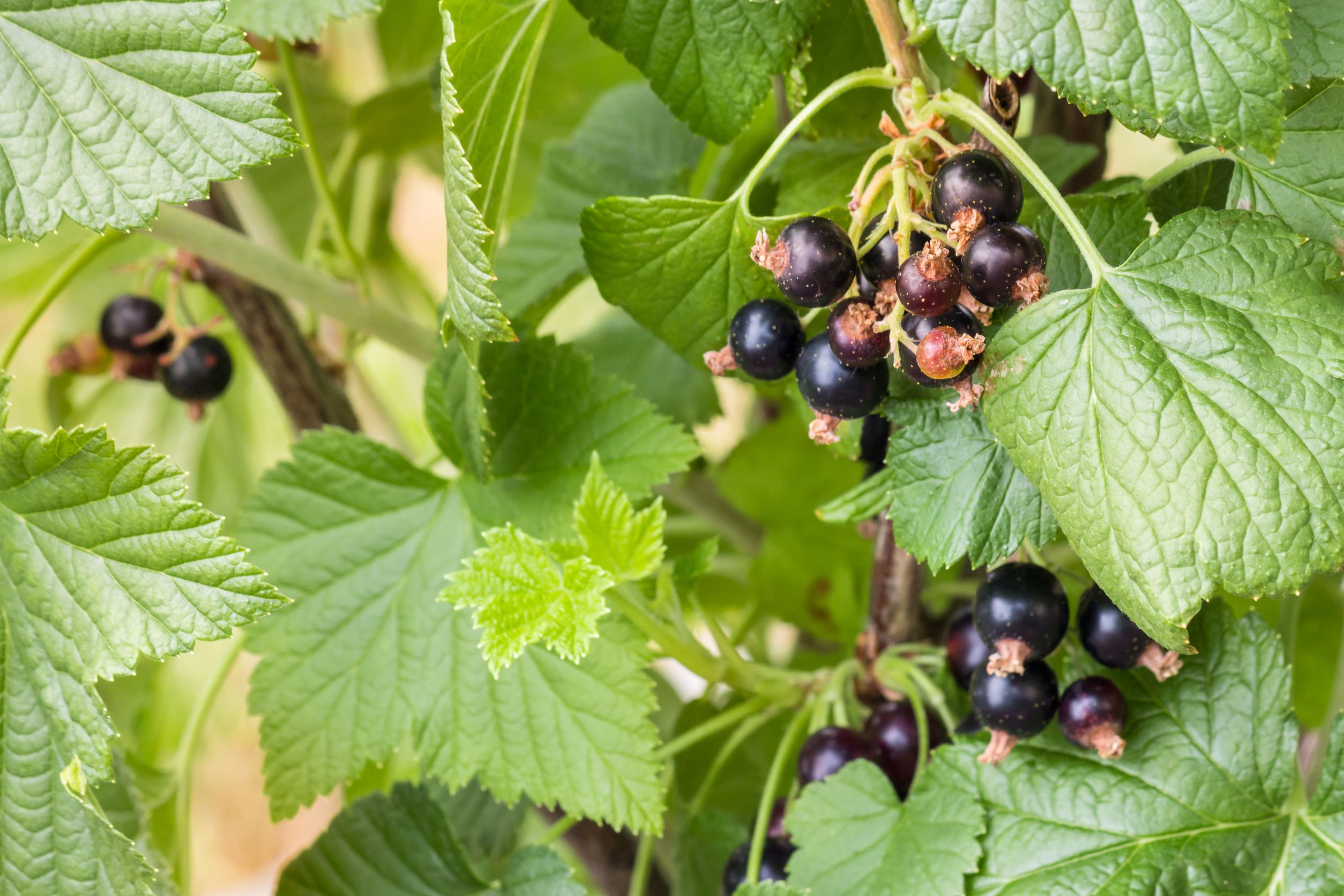Gemmotherapy: A Powerful Modality for Treating Allergies

Gemmotherapy: A Powerful Modality for Treating Allergies
Vis Medicatrix Naturae
Robin DiPasquale, ND, RH (AHG)
Trees are sanctuaries. Whoever knows how to speak to them, whoever knows how to listen to them, can learn the truth. They do not preach learning and precepts, they preach, undeterred by particulars, the ancient law of life. (Herman Hesse)
It is those profound experiences in life that show how powerful plant medicine can be. I was living in Sansepolcro, a small Tuscan town in Italy nestled along the Tiber River, and working for the herb company, Aboca. It was spring, and the female cottonwood trees were sending out so much cotton that the valley looked as if it was snowing. Never before had I experienced such an allergic reaction in my body, with severe sneezing, itchy eyes, dripping nose, and a head full of mucus. As I would walk to work or to the shops around town, many people would say to me, You need Ribes nigrum. You should take Ribes nigrum. Why aren’t you taking Ribes nigrum? And why wasn’t I taking Ribes nigrum, since I was working right where this herbal tincture was being produced? So I went off to the Aboca shop and purchased Ribes nigrum, and started taking it. The response was immediate. I stopped sneezing, my eyes stopped itching, my nose stopped running, and my sinuses and head became clear. As long as I continued to take this herbal tincture, the symptoms abated.
Fast-forward 3 years, and the same series of events occurred, this time in Colepardo, a small Italian hill-town in Lazio. It was spring again, the female cottonwood trees were sending out their cotton, and my allergy symptoms were full-blown. Since I happened to be in the town where Sarandrea gemmotherapy remedies are manufactured, this time it was the gemmo remedy of Ribes nigrum that I reached for. To my relief, the symptoms again abated as I continued to take this remedy several times a day.
What happened after that was even more profound. Each year, as the female cottonwood trees sent out their cotton, my expression of the allergy symptoms lessened and lessened. Something was changing. Something was being repaired. Something was becoming more in balance. This is the distinction between herbal tinctures and gemmotherapy: These gemmo extracts, made from the embryonic tissue of the plants, enhance the body’s ability to repair and rejuvenate.
Gemmotherapy for Allergy
Gemmotherapy remedies are extracted from the buds, the new shoots, and the new rootlets of a plant. Many of the bud extracts are prepared from trees – some familiar to herbalists, as well as many other trees not generally used in herbal medicine. The new shoots come from the shrubs, Ribes nigrum among them. The rootlet plants are 2 remedies made from the grasses, Secale cereale and Zea mays. To prepare these remedies, the plant parts must be harvested in the spring, just as the buds are about to open, just as the new shoots have emerged, and just as the new rootlets are reaching out from the seed. This is called the “balsamic time,” the time when the plant offers its energy of new growth, containing all the potential of the plant emerging. This is when the enzymes and growth hormones are abundantly present, which is the key to the regenerative properties of gemmo extracts.
Working with allergies, there is a collection of gemmo remedies to be considered. Each has specific actions and organ affinities to be differentiated, and can be taken as a simple (a remedy made from a single plant) or as a complex (combination of 2 or more plants), as well as included in herbal formulations with our well-known herbal remedies for allergies, such as nettles, goldenrod, eyebright, and ephedra. Following are some specific gemmo remedies and their properties to consider during allergy season.
Ribes nigrum
Ribes nigrum (black currant) is inflammation-modulating through its cortisone-like action, decreasing inflammatory activity along the mucous membranes of the respiratory, urogenital, and digestive systems. By stabilizing mast cell degranulation, histamine release is decreased. Its diuretic action supports kidney drainage. When taken for 3 months, a desensitization occurs, including a decrease in the intensity and frequency of allergy symptoms and a correcting of the allergic terrain. Black currant is a true adaptogenic remedy. It pairs well with Alnus glutinosa (European alder).
Fagus sylvatica
Fagus sylvatica (beech) has antihistamine action, which is useful in managing allergic symptoms. It seems, however, that beech also works through the liver, stimulating phagocytic action of the hepatic Kupffer cells, thereby cleaning up debris including products of inflammation.
Betula
Betula species (both silver birch and white birch) are considered inflammation-modulating and anti-allergy. It has an antihistamine action. Birch is a liver and kidney drainage remedy, clearing the terrain for all systems. Birch can be used by itself, but may be more effective when combined with black currant.
Alnus glutinosa
Alnus glutinosa (European alder) has a lot to do with managing water in the body, as it does in nature. The flow of water quenches inflammation, and helps maintain moisture balance on mucous membranes. It some ways this gemmo acts like Natrum muriaticum does in homeopathy – ie, thinning excess catarrh so that it can flow more effectively. It has both upper respiratory effects (ears, nose, and throat) and lower respiratory effects (bronchi and lungs). Alder, along with black currant, is considered a true drainer, supporting any organ to clear and rebalance.
Corylus avellana
Corylus avellana (hazel) has an affinity for the lungs, so is most indicated when allergy symptoms go deeper and become asthmatic. Being a remedy that acts on the liver, hazel can also assist with liver drainage, which is essential in any allergy situation.
Carpinus betulus
Carpinus betulus (hornbeam) decreases nasal congestion and helps repair mucous membranes of the sinuses. It is also antispasmodic. Hornbeam is found in forests along with beech and oak; it never grows alone. As a gemmo remedy, it is also rarely used alone, being more effective in combinations. When allergies affect the sinuses, combining black currant with hornbeam helps diminish acute symptoms and supports regeneration in the situation of chronic allergies.
Rosmarinus & Juniperus
When allergy symptoms are present, the liver should be treated simultaneously. If not, it is like pulling a heavy load uphill. Two gemmo remedies to consider for liver support are Rosmarinus officinalis and Juniperus communis.
Rosmarinus officinalis (rosemary) is hepatoprotective and antioxidant, regenerates liver cells, regulates blood sugar, and is choleretic, thus increasing bile secretions. It is catabolic as well, enhancing the burning of waste products and facilitating their elimination through the gastrointestinal tract. Rosemary should be the first choice in supportive allergy treatments, as it can significantly desensitize allergic responses. Be aware, though, that it should not be used long-term, but rather rotated with other gemmo remedies.
Juniperus communis (juniper) has a major depurative action and is the most powerful kidney drainage remedy in gemmotherapy. It also works on the liver because of its ability to detoxify hepatocytes. Juniper is to the kidney what rosemary is to the liver – both are powerful drainage and regenerative remedies.
These 2 remedies are often considered most useful in pediatric cases, although I also find them useful for some adults with allergies, especially chronic cases.
Abies pectinata
Abies pectinata (silver fir) is useful in cases of repeated or chronic allergic episodes. It acts on the upper respiratory areas, in cases of nasopharyngitis, recurrent ear infections, sinusitis, laryngitis, tonsillitis, adenoiditis, and bronchitis. Silver fir helps regenerate the terrain through remineralization.
Rosa canina
Rosa canina (dog rose) stimulates the immune system and the reticuloendothelial system, and is especially useful when there are recurrent or chronic allergic episodes that affect the ear, nose, and throat. As with silver fir, this could involve nasopharyngitis, recurrent ear infections, sinusitis, laryngitis, tonsillitis, adenoiditis, and bronchitis. An excellent combination is dog rose with Hippophae rhamnoides and sea buckthorne, both of which are very high in vitamin C.
Summary
As allergy season is upon us, first with the blooming of the trees of spring, then the grasses and weeds of summer and fall, consider adding gemmotherapy to your naturopathic toolbox. Not only does it promise symptom relief for your patients, but the potential for desensitization and regeneration are locked into each bottle of these embryonic plant extracts.
References:
- Ledoux F, Guéniot G. Phytoembryotherapy: The Embryo of Gemmotherapy. Brussels, Belgium: Editions Amyris; 2012.
- Andrianne P. Treatise on Gemmotherapy: The Therapeutic Use of Buds. Brussels, Belgium: Editions Amyris; 2012.
- Piterà F, Nicoletti M. Compendio di Gemmoterapia Clinica. 6th Edition. Genova, Italy: De Ferrari;
 Robin DiPasquale, ND, RH (AHG), has been practicing in the healing arts for over 30 years. Dr DiPasquale served as faculty at Bastyr University for 15 years where she chaired the Botanical Medicine department, was a clinical supervisor, and taught botanical medicine and homeopathy. After moving to Madison, WI, she opened a family practice, Red Lotus Healing Arts. She was also the first ND to work directly in patient care through the U of WI Integrative Medicine Clinic. Dr DiPasquale now lives and practices in Fort Collins, CO. She has been teaching on-site and on-line courses in Gemmotherapy for over 10 years. Her newest passion is Family Constellation Therapy.
Robin DiPasquale, ND, RH (AHG), has been practicing in the healing arts for over 30 years. Dr DiPasquale served as faculty at Bastyr University for 15 years where she chaired the Botanical Medicine department, was a clinical supervisor, and taught botanical medicine and homeopathy. After moving to Madison, WI, she opened a family practice, Red Lotus Healing Arts. She was also the first ND to work directly in patient care through the U of WI Integrative Medicine Clinic. Dr DiPasquale now lives and practices in Fort Collins, CO. She has been teaching on-site and on-line courses in Gemmotherapy for over 10 years. Her newest passion is Family Constellation Therapy.

No comments:
Post a Comment